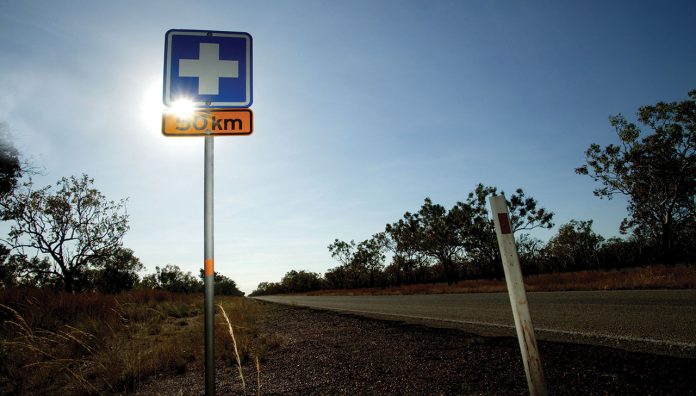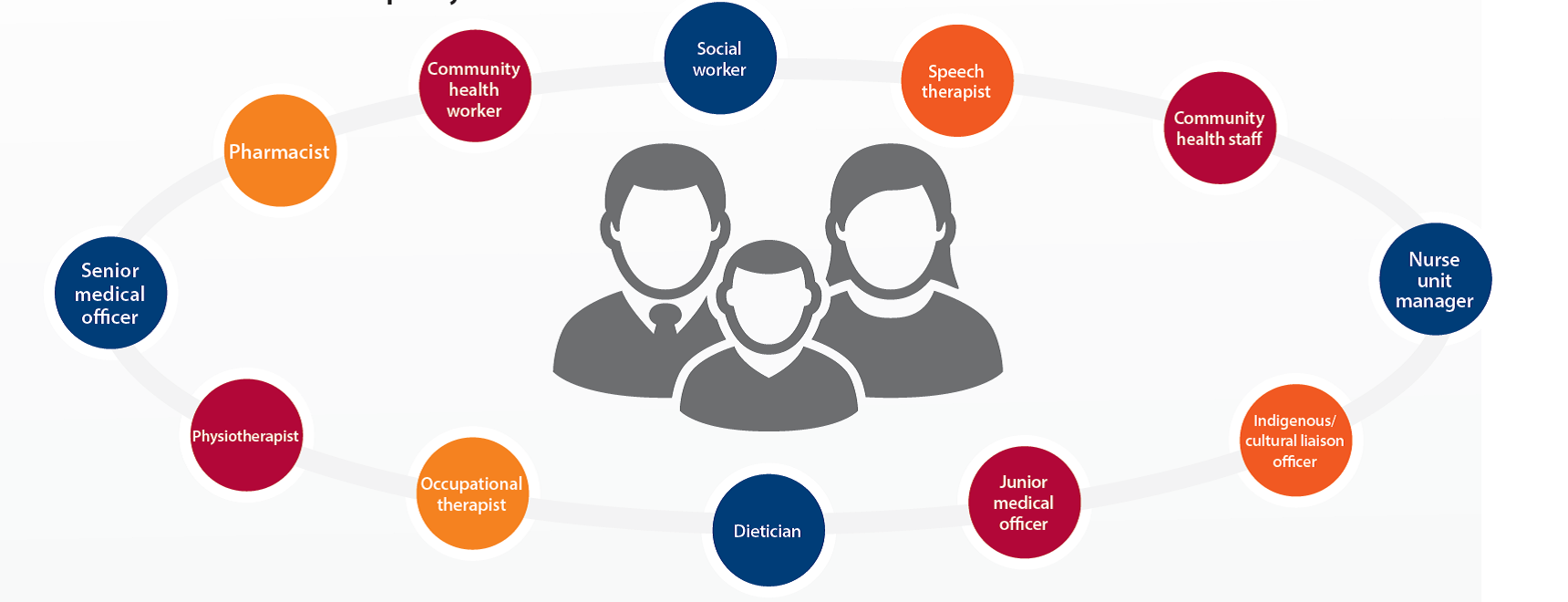A small rural hospital in southern Queensland has introduced a new model of pharmacy practice. Hopefully, it will lead to reduced medicine-related hospital admissions.
A new model of pharmacy practice is being developed at a small rural hospital in southern Queensland’s Darling Downs region. The intention is to improve transitions of care; improve interpersonal and digital communication between hospital and primary care providers and prevent medicine-related hospital admissions. For rural Australians, it provides an innovative practice model for medicines management care.
The pharmacist’s position is based on traditional hospital pharmacy complemented by community outreach programs, pharmacy liaison and public health initiatives. It is a non-dispensing/non-supply role whereby dispensing services and associated revenue are retained by local pharmacies.
Based in the acute ward, a typical day begins with attendance at medical handover meetings followed by ward pharmacist duties such as medicines reconciliation and discharge counselling. Once inpatient services are completed, time is spent ‘on the road’ in the community, visiting recently discharged patients and those non-admitted patients identified by emergency department staff as having complex medicine needs.
Local general practitioners and community pharmacies are also visited en route to ensure that any medicine issues relating to discharged patients are communicated and discussed collaboratively.
Background
Australians living in rural and remote areas have lower life expectancy, higher rates of disease and higher rates of avoidable hospitalisations.
Health services in these areas are faced with many challenges including continuity of medicines management and limitations on delivery of HMRs.
This rural hospital services a population of 8,500 people delivering emergency, inpatient, maternity, outpatient and telehealth care. As with many rural hospitals, there has never been a pharmacy service within the hospital.
However, medicine-related issues persist that require the professional skills of a pharmacist. An internal audit in 2017 identified areas of polypharmacy, readmission rates and patient medicine compliance as priority targets to address.
After this process, the case for an integrated community clinical pharmacist was developed by the local Medical Superintendent.
Earlier this year – with widespread support from management and the executive of the health service, senior medical officers, general practitioners and community stakeholders – a foundation pharmacist position was created. Funding was provided under the Council of Australian Government initiative, ‘Better Access to Primary Care Services in Rural Areas’.
Innovation and initiatives
In addition to day-to-day duties, the hospital’s Director of Nursing and its Medical Superintendent have been highly supportive of innovation. This backing has allowed the development of some unique models of pharmacy practice in the rural setting including a shared care pharmacy pathway, pharmacist integration into healthcare teams and pharmacist participation in public health programs.
Shared care pharmacy pathway
The hospital catchment and adjoining shire – an area of approximately 10,000 square kilometres – is serviced by only one HMR pharmacist. And while the value of a post-discharge Home Medicines Review (HMR) is well established, it is limited by barriers of timeliness, service caps and, rurally, the availability of accredited pharmacists. Local Residential Medication Management Review (RMMR) services are delivered by a corporate metropolitan provider.
To overcome these barriers, new models of post-discharge medicine care are now provided. These include a coordinated pharmacy care model between hospital and community pharmacists – a hospital-referred Medscheck.
Pharmacist Outreach appointments and Multidisciplinary Home Visits are also being delivered, as is extended support for existing models of medicines review, HMR and RMMRs.
To ensure a patient receives the most appropriate level of post-discharge medicines care, a risk tool is under development. It is anticipated that risks commonly associated with medicine misadventure will be assigned a score from 1 to 5 (see Figure 1).
A patient’s cumulative score can then guide the most suitable post-discharge medicines review (see Figure 2). For example, a patient with reduced cognition and mobility, initiated on multiple medicines during an extended stay in hospital, would score as moderate to high risk. As such the patient would be considered suitable for a Pharmacist Outreach visit or HMR.
A patient with fewer risk factors, such as poor health literacy and in need of a Dose Administration Aid (DAA), would most likely benefit from a hospital-referred Medscheck. Post-discharge options for medicines follow-up are discussed with patients prior to discharge and written information is provided.
Plans for validation and evaluation of this tool should allow further development of the model.
FIGURE 1 – Risks assessed
*Assessed by hospital pharmacist |
FIGURE 2 – Proposed stratification tool for patient review post-discharge
| RISK | SCORE | REVIEW | DETAILS |
| Low | 0-10 | Hospital referred Medscheck | Referral forwarded to patient’s pharmacy by hospital pharmacist. Feedback provided to hospital pharmacist. |
| Moderate | 10-15 | Hospital pharmacist outreach | Clinic consultation or home visit. Outcomes documented and forwarded to GPs. |
| High | >15 | Home Medicines Review | Hospital pharmacist liaision with GP practices to facilitate referral process. |
| Very high | >20 | Multidisciplinary home visit | Identified by MDT team at significant risk of multi-factorial post-discharge misadventure. Follow-up involving the hospital pharmacist and community nurse. |
| Aged care clients | RMMR | Discharge from Hospital Notification with appropriate medicine-related information faxed. |
Integration into healthcare teams
There is a solid team-based culture at this small rural hospital and all staff have a strong sense of commitment to the health and welfare of their community. This is evident in the Multidisciplinary Discharge Team (MDT), a broad-based team of medical, allied health, nursing and community health staff into which the pharmacist has been integrated (Figure 3).
Meeting weekly, the MDT works to ensure a trouble-free transition from hospital to home. These regular meetings also allow community health staff to highlight any problems with recently discharged patients and to prevent possible readmission.
The future inclusion of community pharmacists in the MDT is being explored, which presents an exciting opportunity for community pharmacists.
FIGURE 3 – The multi-disciplinary team
Public health initiatives
The role for hospital pharmacists in public health initiatives is also being explored with participation in, and implementation of smoking cessation, opioid stewardship and osteoporosis risk programs.
The pharmacist assists with local facilitation of a dynamic regional health service initiative to encourage pregnant Aboriginal and Torres Strait Islander women, or those pregnant with an Indigenous baby, to attend antenatal appointments and quit smoking. (Bridging Antenatal Care, Indigenous Babies, and Smoking Cessation (BAIBS).
Digital health platforms
While the focus of the new role has been on improved interpersonal communication, digital health platforms are also used extensively. Queensland Health digital platforms currently used include:
- The Enterprise-wide Liaison Medication System (ELMS), a web-based application used by pharmacists to record both admission and discharge medication profiles.
- The Viewer, another essential web-based platform that collates data from more than 15 digital health applications, including My Health Record. Patient demographics, admission and discharge history and validated pathology results are accessible to Queensland healthcare professionals, including GPs.
- The Electronic Discharge System (EDS), used to generate electronic discharge summaries. An enhanced discharge medicine management strategy is being trialled at our hospital with the addition of pharmacist medication management comments on discharge summaries.
My Health Record
The My Health Record system is an invaluable tool for continuity of medicines management. The medicines information view is used extensively at our hospital to access dispensing records. Shared health, discharge and recent health summaries also provide valuable information.
Community pharmacist access to discharge summaries after patients leave hospital has led to better communication between hospital and community pharmacies as well as the improved delivery of post-discharge Medschecks and Diabetes Medschecks.
The future development of appropriate software for uploading documentation from medicines reviews, such as Medscheck into My Health Record as an event summary as well as sending Medscheck referrals to community pharmacies, will allow more ‘dots to be joined’ in medicines management.
For those patients without a My Health Record the future role of secure messaging services is under evaluation.
The future
The role of a hospital-based liaison pharmacist provides an innovative model for pharmacists in rural areas.
Working in rural hospitals, providing outreach services and working closely with local pharmacies presents a valuable opportunity to improve medicines management for patients. Postgraduate study options include James Cook University’s Graduate Diploma of Rural Generalist Practice (Pharmacist), believed to be the only one of its type in Australia.
All these options provide an exciting opportunity for pharmacists to contribute to improved care in rural communities that have historically poorer access to health care services.
Acknowledgment: The authors would like to acknowledge and thank Dr Geraldine Moses OAM, FPS for her guidance and opinions.
| Build your skills with PSA Short Courses at www.psa.org.au/psashortcourses |



 Dr Peter Tenni[/caption]
Dr Peter Tenni[/caption]
 How should we deprescribe gabapentinoids, according to the Maudsley Deprescribing Guidelines[/caption]
How should we deprescribe gabapentinoids, according to the Maudsley Deprescribing Guidelines[/caption]



 Pharmacists have always prescribed, but they have the potential to prescribe much more
Pharmacists have always prescribed, but they have the potential to prescribe much more






